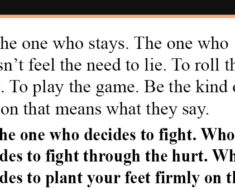
Source: https://blogs.constantcontact.com/
Writing an effective press release need not be rocket science. It can be simple and easy to get your message across to those you want to receive it. An effective press release can help any company or an organization achieve business and marketing objectives, and, for charitable causes, it can often be the difference between having a successful and well-attended event, or not.
When it is prepared and distributed effectively, the press release can help generate attention for your company and its products/services while bringing valuable media coverage to what you and your employees are doing. It can help you achieve what you are trying to accomplish as a business enterprise, and/or highlight issues that might concern your company, and many others.
As someone who studied journalism and public relations as an undergrad, and then worked for decades as academic writer at essay writing services and as a practitioner of advertising and public relations, I know the value of learning to use the power of the press release as an effective business tool.
First, Determine the News Worthiness of a Story

Source: http://bookpublicityservices.com/
The purpose of a press release is to inform people about news you believe they need to be made aware of. That’s why the first and most important consideration when preparing to write a press release is to consider the “news worthiness” of your story. While your company or organization may desire to increase sales and profits, the reading public wants to know the “who,” “what,” “when,” “where,” “why,” or “how” behind something newsworthy that has happened, or behind an upcoming event.
As a general rule, the public is not concerned, as you are as a business owner or entrepreneur, about what your organization is trying to accomplish through its public relations or advertising efforts. But, most people do want to stay abreast of what is going on in the world and in the community they live in. Therefore, if you have information that can help them become aware of something relevant, useful, and/or important to them, then you might have a story that is worthy of writing a press release about. What makes a story or a topic newsworthy? Considerations used to determine news value include the following:
Proximity or Closeness—How close the story is, geographically and psychologically, to those who will read it? The closer a story is to your audience, in distance, and/or in terms of how much readers care about it, the more they will “relate” to a story.
Timing of Story—The clock is ticking, and something that is “new” today won’t be nearly as “new” tomorrow. News is concerned with timeliness of topics, how “current” an event is. And, while old topics can become new again by being updated with current information, readers are interested in what is happening now. Today’s news is tomorrow’s history.
Significance to Readers—How many people are likely to be affected by the story? If a story affects or is relevant only to a few or even a few dozen people, it will not have the “salience,” the importance, of a topic that affects and is relevant to hundreds, thousands, or millions of people.
Presence of General, Human Interest—Topics or stories capable of inspiring an emotional response don’t have to be “hard news.” That is, they can pass the worthiness test by appealing to readers on an emotional level. Stories that present something that is humorous, amusing, sad, quirky/offbeat, and those that are simply shocking, can capture media and reader interest.
Prominence of Those Involved—People who are well known are likely to be of interest to more people than someone not well known, simply becausethey are well known. The stars of stage and screen, as well as the stars of sports, politics, business, and academia, who are known to many or whose work affects many, will likely gain mass media attention and reader interest.
Writing the Headline

Source: https://www.varchev.com/
Once you are sure you have something to say that is newsworthy, from start to finish, think about your audience as you write your press release. You will need to develop an angle for your story. That is, try to make a strong connection with your readers based on what they are interested in when it comes to your story. For example, you could make your press release timely by tying your story to current events or to social issues of importance to readers, if possible.
As you are considering your headline, keep in mind the attention-getting news value of your story to your audience, and to the media. Remember, you must capture the attention of the news editor using the headline and first paragraph of the release. Not only must what you write have credibility, it must be interesting, and it must make the publication’s news editor believe the story is something his or her readers want to know about.
The value of the story to readers must be immediatelyapparent. Remember, the headline has to capture the interest of the editor by convincing him or her that readers will want to read the story. Therefore, you must think about the interests of your audience and those of the news editor at the same time. Will a lot of people find your story interesting?
Your headline and first paragraph must tell the main part of your story. The rest of your press release is there to provide the details. To get a feel for how headlines are written, be sure to read lots of good newspaper writing. Check out the front page as well as the business and lifestyle sections of publications such as the New York Times or the Washington Post. And don’t forget to study local publications, especially those you want to publish your press release as a news item. Get a good feel for the style and wording used to write effective headlines.
The Body of Your Press Release

Source: https://searchengineland.com/
Use the body of your press release, the paragraph or paragraphs that come after the headline, to illustrateyour story. Provide real life examples about how your company or organization solved a problem. Identify the problem at hand, then illustrate why your solution is the right solution. Show cause and effect. Following are some standard guidelines used by public relations professionals. Using these will help you create press releases that have a better chance of being published:
- Always tell the truth, and stay with the facts.
It is always best to tell the truth. Don’t add fluff, embellishments, or exaggerations to your story. Remember, credibility and believability is earned by telling the truth. This is easy to do when you stick with the telling of actual facts––including information related to a product/service, one or more people, an event, your company or organizational goals, plans, or upcoming or special projects.
- Use active voice, not passive, to tell your story.
Using verbs in the active voice will bring your press release to life. For example, instead of writing “entered into a agreement” use the word “agreed” instead. Search for and do your best to use strong verbs. “Team members exhibited harsh indignation over the incident,” for example, is not nearly as strong as “Team members were outraged over the incident.”
- Always follow the rules of grammar and effective writing style.
You will lose credibility and even believability if your release contains excessive errors in grammar and style, and you will also run the risk of your press release being placed in File 13 (the garbage can). After writing your release, make a print out, proofread, edit, and then rewrite it as many times as needed to make it as good and as easy to read as possible. When writing, be sure to avoid industry jargon and clichés. Using words that are understood only by those in a particular industry or profession will only confound many readers. Editors know this and are on the lookout for it, so don’t do it. Focus on the aspects of your news item that truly set your story apart from other stories.
- Use word economy.
Use only the words you need to tell your story. Keep your press release concise by making every word count. Avoid hype. Nothing signals “amateur” more loudly than overuse of the exclamation point (!). Inserting exclamation-point laden hype into your press release will destroy your credibility, and it will make it nearly impossible for you to get your release read. If you must use an exclamation point, use one, but never rely on this or any punctuation to get your point across. That’s what words are for. And if you are using the right words, properly, the importance of what you have to say will shine through.
- Get needed permission
If you are including quotes of employees, executives, or affiliates of other companies or organizations, or if you’re planning to use information of a proprietary nature, be sure to get permission to use it before sending your press release to the media.
Finishing Up
How many paragraphs should you have? It depends on what you have to say. But, it is nearly impossible to tell any newsworthy story in just a few sentences. So, if you have only a sentence or two, there is a good chance that you don’t have something newsworthy to write about.
You can also include additional information about your company in your press release; information that is not directly related to the story. Adding this type of information is usually done in a short paragraph called a “boilerplate.” The boilerplate paragraph is where you would provide information about your company that you can include in any press release you send out, such as information on your company’s mission/vision/goals, it products and/or services, and/or a brief history of your company or organization.
Many distribution outlets will ask for a summary paragraph of your press release. For this reason, you should always prepare a one-paragraph summary of it, in case it is needed. Some distribution points (especially online distributors) will only ask for the headline, your summary, and a link to your press release.
Unless you don’t mind getting spammed, don’t include your e-mail address in the body of your press release. Remember, if you include it, it will be available to the public.









































